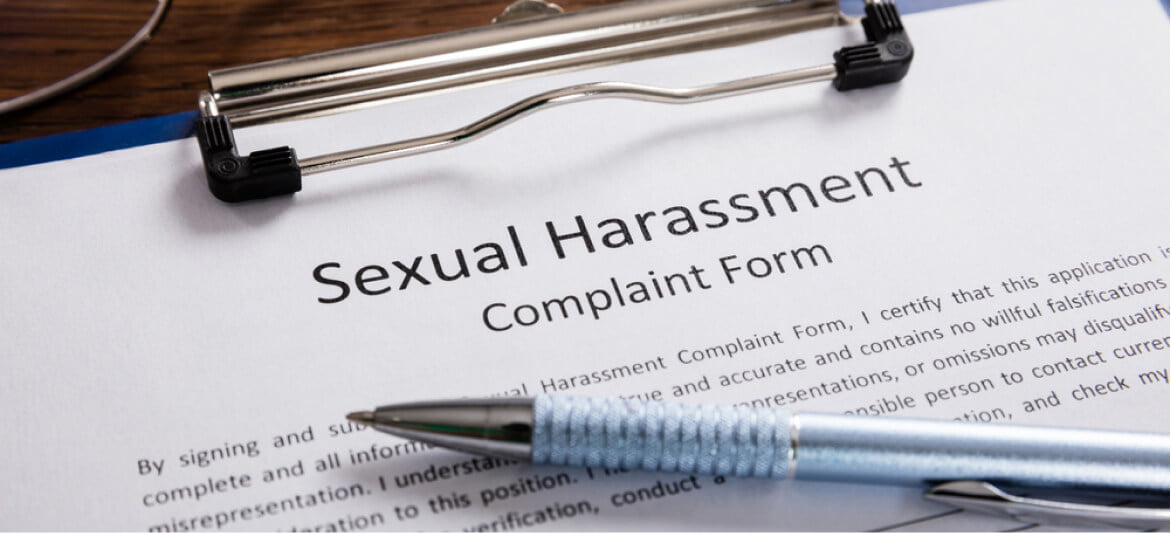
WHAT IS SEXUAL HARASSMENT?
Sexual harassment is sexual behavior that is unwanted or unwelcome. The tests for determining what amounts to sexual harassment under the relevant Australian legislation are slightly different, however, broadly sexual harassment can be defined as conduct that:
- is of a sexual nature;
- is unwelcome or unsolicited; and
- the person engaging in the conduct did so with the intention of offending, humiliating or intimidating the person or a reasonable person would anticipate in the circumstances that the person being harassed would be offended, humiliated or intimidated.
Sexual harassment is a type of sex discrimination. In Australia, State and Commonwealth legislation provide that sexual harassment and discrimination on the basis of sex, is unlawful. The following is the list of Commonwealth and State legislation that operate to protect persons from sexual harassment:
- Sex Discrimination Act 1984 (Cth);
- Anti-Discrimination Act 1991 (Qld);
- Equal Opportunity Act 2010 (Vic);
- Anti-Discrimination Act 1977 (NSW);
- Equal Opportunity Act 1984 (SA);
- Anti-Discrimination Act 1992 (NT);
- Equal Opportunity Act 1984 (WA);
- Anti-Discrimination Act 1998 (Tas); and
- Discrimination Act 1991 (ACT).
THE LEGISLATIVE TESTS FOR SEXUAL HARASSMENT

The Commonwealth and Queensland legislative provisions have been considered in this article and are as follows:
Section 28A of the Sex Discrimination Act 1984 (Cth) defines sexual harassment as follows:
Meaning of sexual harassment
(1) For the purposes of this Division, a person sexually harasses another person (the person harassed) if:
(a) the person makes an unwelcome sexual advance, or an unwelcome request for sexual favors, to the person harassed; or
(b) engages in other unwelcome conduct of a sexual nature in relation to the person harassed;
in circumstances in which a reasonable person, having regard to all the circumstances, would have anticipated the possibility that the person harassed would be offended, humiliated or intimidated.
- (1A) For the purposes of subsection (1), the circumstances to be taken into account include, but are not limited to, the following:
- the sex, age, sexual orientation, gender identity, intersex status, marital or relationship status, religious belief, race, colour, or national or ethnic origin, of the person harassed;
- the relationship between the person harassed and the person who made the advance or request or who engaged in the conduct;
- any disability of the person harassed;
- any other relevant circumstance.
(2) In this section:
“conduct of a sexual nature” includes making a statement of a sexual nature to a person, or in the presence of a person, whether the statement is made orally or in writing.
Section 119 of the Anti-Discrimination Act 1991 (Qld) states that:
“Sexual harassment” happens if a person—
(a) subjects another person to an unsolicited act of physical intimacy; or
(b) makes an unsolicited demand or request (whether directly or by implication) for sexual favours from the other person; or
(c) makes a remark with sexual connotations relating to the other person; or
(d) engages in any other unwelcome conduct of a sexual nature in relation to the other person;
and the person engaging in the conduct described in paragraphs (a), (b), (c) or (d) does so—
(e) with the intention of offending, humiliating or intimidating the other person; or
(f) in circumstances where a reasonable person would have anticipated the possibility that the other person would be offended, humiliated or intimidated by the conduct.
The Commonwealth and Queensland tests are slightly broader then some States, as the above tests provide for a reasonable person test where a reasonable person would have ‘anticipated the possibility’ that the individual would have been offended, humiliated or intimidated by the harasser’s behavior. However, in (for example) New South Wales, South Australia and Victoria the legislation provides for a slightly narrower test as it includes only the word ‘anticipated’.
IN AUSTRALIA, SEXUAL HARASSMENT:
- does not have to be deliberate or repeated to be unlawful, it can be a one-off incident;
- can be verbal, physical or visual;
- can still be considered sexual harassment whether or not the person who engaged in the conduct intended to give offence; and
- can also be of a criminal nature such as sexual assault or indecent exposure. In that instance, criminal laws can apply.
SEXUAL HARASSMENT IN THE WORKPLACE

Sexual harassment can occur anywhere, however, this article focuses on sexual harassment in the workplace.
Sexual harassment at work can be committed by an employer, a colleague, contractor, client or other person who is in a working relationship with the person who has been sexually harassed. This article considers the rights and responsibilities of employers and employees and the options for employees who are sexually harassed at work.
A toxic workplace culture can lead to disharmony in the workplace, job dissatisfaction, higher turnover rates as employees leave and sexual harassment claims. It is important to understand the type of behaviour and circumstances that can constitute sexual harassment in the workplace.
The following are some examples of the type of conduct that can constitute sexual harassment:
EXAMPLES OF SEXUAL HARASSMENT:
- gestures that are sexual, staring at a person or whistling;
- exposing a person’s genitals;
- banter that is insulting and/or demeaning;
- displaying pornographic material – posters, photos, website, emails or videos in the workplace;
- indecent or explicit comments about your appearance;
- touching, groping, pinching or hugging a person, trying to take a colleague’s clothes off – such as unzipping a uniform;
- intrusive questions about a person’s private life or body;
- unnecessary familiarity, such as deliberately brushing up against a person;
- sending sexually explicit text messages, emails or phone calls to a person; and
- being subjected to a “boys club” atmosphere where you have to hear sexual comments made to other employees in the workplace.
SEXUAL HARASSMENT CASE STUDIES
The Work Christmas Party
Julie went to the work Christmas Party which was held at a hotel bar in the city. Upon walking into the work function, Julie’s male work colleagues wolf whistled at her and made sexual remarks about her dress and her breasts. Later in the evening, one of Julie’s male colleagues Brian started dancing on the dance floor near Julie. He then proceeded to loosen and lower his pants, then turned around and bent over to show Julie his bare bottom.
Harassment by co-workers
One of Jennifer’s colleagues superimposed Jennifer’s face on a suggestive pornographic picture and then emailed it around the entire office. Following this, several colleagues of Jennifer’s made sexual comments about her appearance and her sexual ability when she went to the lunchroom to have her lunch break.
Harassment by Manager
Steven worked at a music store part-time. After three months of employment, Steven’s Manager Laura started to make inappropriate comments to Steven about his sex life. It was a small music store and Laura was Steven’s main supervisor at work. Steven only met the owner of the business once during his employment. Laura, his Manager, wanted to know if Steven was sexually active. She would read pornographic magazines in front of Steven to see if he was ‘turned on’. A couple of months later, Laura placed her hand on Steven’s backside and kissed Steven directly on the mouth. Following this, Laura would regularly try and keep Steven back at work after closing time and attempt to engage in sexual intercourse with him or make sexual suggestions. Steven needed the money and was unable to resign from his employment, until he secured an alternative job. Upon finding another job, Steven resigned immediately from the music store.
Sexual harassment in the workplace can have a significant and detrimental effect on a workplace and a person’s well-being.
EMPLOYER OBLIGATIONS

An employee has the right to a workplace that is free of discrimination, sexual harassment and vilification. An employer has a duty of care to ensure an employee’s health and well being at work and to take reasonable steps to prevent harassment from occurring.
This can be achieved by an employer:
- implementing and enforcing policies on discrimination and harassment;
- providing regular training;
- setting out a clear complaint process, so employees know what to do if they have an issue.
It is not satisfactory for an employer to discharge their duty of care under the legislation by the employer just having the policies and procedures in place. An employer must actively enforce the policies and provide continuous training on harassment.
VICARIOUS LIABILITY
If an employer does not meet its obligations to provide a harassment free workplace, an employer can be held to be vicariously liable if an employee is sexually harassed at work. This means that the employer can be found accountable for the actions of the person who engaged in the sexually harassing behaviour.
The legislative provisions in relation to an employer’s vicarious liability are as follows:
Section 106 of the Sex Discrimination Act 1984 (Cth) sets out the vicarious liability of an employer.
Vicarious liability etc.
(1) Subject to subsection (2), where an employee or agent of a person does, in connection with the employment of the employee or with the duties of the agent as an agent:
- an act that would, if it were done by the person, be unlawful under Division 1 or 2 of Part II (whether or not the act done by the employee or agent is unlawful under Division 1 or 2 of Part II);
- or
- an act that is unlawful under Division 3 of Part II;
this Act applies in relation to that person as if that person had also done the act.
(2) Subsection (1) does not apply in relation to an act of a kind referred to in paragraph (1)(a) or (b) done by an employee or agent of a person if it is established that the person took all reasonable steps to prevent the employee or agent from doing acts of the kind referred to in that paragraph.
State legislation also provides that an employer will be found liable if a worker breaches the Act. Section 133 of the Anti-Discrimination Act 1991 (Qld) provides that:
133 Vicarious liability
(1) If any of a person’s workers or agents contravenes the Act in the course of work or while acting as agent, both the person and the worker or agent, as the case may be, are jointly and severally civilly liable for the contravention, and a proceeding under the Act may be taken against either or both.
(2) It is a defence to a proceeding for a contravention of the Act arising under subsection (1) if the respondent proves, on the balance of probabilities, that the respondent took reasonable steps to prevent the worker or agent contravening the Act.
However, it is not only an employer who is responsible. An employee also has responsibilities.
EMPLOYEE RESPONSIBILITIES

Employees have a responsibility to ensure that they do not engage in discriminatory, sexually harassing or inappropriate behavior at work. Further, they have a responsibility to comply with their employer’s workplace policies that cover this type of conduct.
In addition, an employee ought not encourage or request a person to engage in this type of conduct as this is also inappropriate behavior.
If an employee engages in sexually harassing behavior, then that employee may:
- face disciplinary action by their employer which could include being dismissed from their employment; and/or
- have a formal complaint made against them by the person subjected to the alleged harassment.
If a complaint is made to the Australian Human Rights Commission or the Anti-Discrimination Commission in their State or Territory, an employee can be found to be personally liable and face penalties. This may mean that an employee may have to pay damages such as monetary compensation to the person they harassed (or encouraged to be harassed).
Employees in senior positions such as Managers, Supervisors or Executives have a responsibility by virtue of their senior positions to demonstrate acceptable workplace behavior and take steps to prevent harassment in the workplace occurring. Senior employees and Management ought to ensure that they actively promote and support workplace policies and procedures in relation to sexual harassment and take appropriate action in circumstances where a complaint has been lodged.
PREVENTATIVE MEASURES AND STRATEGIES

A workplace can achieve a harassment free zone if everyone is vigilant, mindful of their behavior and does not permit this type of behavior in the workplace or for it to continue to go unchecked.
To that end, there are a number of strategies that can be employed by an organisation to prevent harassment in the workplace. These are as follows:
- implement policies and procedures on sexual harassment;
conduct regular meetings in the workplace where the workplace policies and procedures on harassment are discussed. This will assist in making it clear to employees what is harassing behavior, what behavior is expected of them at work and the avenues for an employee to make a complaint if an employee is subjected to harassment; - schedule refresher training to take place on workplace harassment and discrimination. Discuss scenarios with the employees which demonstrate discriminatory or harassing behavior or material to ensure that all employees are aware of what is and isn’t appropriate behavior;
- audit the workplace to determine if there is material displayed that may be inappropriate or discriminatory; and
- ensure employees are aware that complaints will be taken seriously and employees will face disciplinary action if they engage in inappropriate behavior.
WHAT STEPS CAN BE TAKEN IF AN EMPLOYEE HAS BEEN THE SUBJECT OF SEXUAL HARASSMENT?
As a general rule an employee can make an internal complaint within their organisation or make a formal complaint to an external body such as the Australian Human Rights Commission or Anti-Discrimination Commission in their State or Territory. These options are explored further below.
INTERNAL COMPLAINT
Internal Complaint Steps
There are a number of steps that can be taken internally by an employee who is of the view they are being sexually harassed in the workplace.
- Review the workplace’s organisations policies and procedures on sexual harassment (if any). A policy will usually set out what is the meaning of sexual harassment under the applicable legislation and the avenue for making a complaint.
- Write down the incident or incidents of when the employee was sexually harassed. It is important to include as much detail as possible of the alleged incidents, such as dates, times and if any witnesses. If the offensive material is in writing or pictures, a prudent step is to print the material out or take a photograph. This will aid an employee in making a complaint and/or to be able to discuss the situation.
- It may be appropriate at first instance for the person being harassed to approach the harasser directly and ask them to stop this behavior. This can also be done in writing by the person being harassed. However, it is important that the individual being harassed only approach the harasser directly if they feel this may stop the behavior and not put the person in a position where the employee may be subjected to further inappropriate behavior or retribution.
- Approach a Manager/Supervisor (if the employee feels comfortable) or the person who the employee thinks would be the most understanding and in a position to deal properly with the matter. The organisations policy may set out who an employee can go to if the employee feels they are being sexually harassed.
- Make a complaint in writing to the employee’s organisation about the harassing behavior.
FORMAL EXTERNAL COMPLAINT
Internal Complaint Steps
If an employee has been sexually harassed at work, there are several avenues available to an employee to make a formal external complaint. There are a number of reasons as to why an employee may wish to make an external complaint, whether it be that the employee has made an internal complaint with their employer and no action has been taken or the employee did make a complaint, but the situation hasn’t been resolved to their satisfaction.
State and Territory Anti-Discrimination Commissions and the Australian Human Rights Commission are the authorities in Australia that can investigate and resolve complaints relating to sexual harassment. The State and Territory Commissions are listed as follows:
- ACT Human Rights Commission;
- Anti-Discrimination Board of New South Wales
- Anti-Discrimination Commission of Queensland
- Equal Opportunity Commission Western Australia
- Northern Territory Anti-Discrimination Commission
- Office of the Anti-Discrimination Commission (Tasmania)
- South Australia Equal Opportunity Commission
- Victorian Equal Opportunity and Human Rights Commission.
An employee can contact the Australian Human Rights Commission or their State or Territory Commission directly to make a formal complaint.
WHAT MATTERS OUGHT TO BE INCLUDED IN A FORMAL COMPLAINT?
Generally, a complaint must:
- be made in writing;
- be made by the person (or on behalf of that person) who has been the subject of the alleged harassment;
set out the events or acts of harassment that occurred. It is important to include as much detail as possible, such as dates, times and places, who was involved and what happened. If there were any verbal comments that were made and what these words or statements were; - include why the actions set out in the complaint are unlawful, that is, how did the actions of the harasser contravene the legislation which prohibits this behavior. Refer to humanrights.gov.au and the applicable State and Territory websites such as the www.adcq.qld.gov.au (if you are in Queensland) for more information on the requirements for lodging a complaint;
- include any relevant supporting documents with the complaint. For example, any emails that contain sexually harassing content from the person who has harassed the complainant; and
- if an employer did not take any measures to prevent the harassment from occurring, this ought to be included within the complaint. Further, if the relevant employer does not have a workplace policy on sexual harassment, or does, but doesn’t abide by it or failed to take any action after becoming aware of the sexual harassment, these are also important matters to address in the complaint. The complaint ought to include how the employer is vicariously liable with reference to the relevant section of the legislation.
TIME LIMITS
There are time limits associated with making a complaint. Generally, the person who has been harassed has between six to 12 months to make a complaint from when the alleged acts or act of sexual harassment occurred.
It is important to check time limits with the applicable Commission or refer to the legislation if a person wishes to make a complaint.
WORKPLACE PROTECTIONS

Under anti-discrimination legislation there are also protections from victimisation. Victimisation is when a person victimises another person because they have made a complaint, intend to make a complaint or have assisted someone else to make a complaint (such as by giving evidence or information).
An individual or corporation who has been found to be victimising a person can be fined or face imprisonment in certain circumstances.
If a person makes a complaint and as a result of them making a complaint, their employer takes adverse action against them, there are also workplace protections under the Fair Work Act 2009 (Cth) that prohibit this behaviour. Adverse action may include an employer demoting the employee who made the complaint, dismissing the employee or reducing their hours as a consequence of them making a complaint in relation to their employment.
If an employee makes a complaint with the Fair Work Commission on the grounds that their employer took adverse action against them, timeframes apply to the making of the complaint.
If as a result of the employee making a complaint their employer dismisses them, they have 21 days after the date the dismissal took effect in which to file a general protections application with the Commission. However, the 21 day time limit does not apply to this type of application if it does not involve a dismissal. If an employee has not been dismissed (but for example demoted) than they have up to six years from the day that the contravention occurred to lodge an application.
CASE LAW
In recent years, the decisions being handed down by Courts and Tribunals in Australia in relation to sexual harassment have shown a change in the amount of damages being awarded to complainants in this area.
Historically, the awards for damages for persons who have been sexually harassed have been quite marginal, with awards for damages ranging between $1000 to $20,000. However, due to changing community expectations, there has been a shift in the judicial system with damages being awarded for sexual harassment in the workplace ranging from $300,000 to $1,300,000 in certain cases.
The following recent cases are examples of where an increased amount of damages have been awarded in Australia by Courts and Tribunals:
Richardson v Oracle Corporation Australia Pty Ltd [2014] FCAFC 82
In the 2014 decision of Richardson v Oracle Corporation Australia Pty Ltd, the Full Court of the Federal Court awarded damages to Ms Richardson against her former employer as a result of the sexual harassment she was subjected to by her colleague. At first instance, Ms Richardson was only awarded $18,000 for her pain and suffering and loss of enjoyment of life. Further, Ms Richardson was not successful in her claim for economic loss. However, Ms Richardson appealed that decision.
The Full Court of the Federal Court held differently to that of the Judge at first instance and stated that the award of damages was “manifestly inadequate” when considering community standards and expectations. Consequently, Ms Richardson was awarded $100,000 by the Full Court for the psychological harm, damage to her reputation and the detrimental effect the sexual harassment had on her relationship with her partner. In addition, the Full Court was of the view that there was a “sufficient causal link” between Ms Richardson’s resignation from her employment with Oracle and the sexual harassment she suffered. Accordingly, the Court also awarded her $30,000 for economic loss.
Matthews v Winslow Constructors (Vic) Pty Ltd [2015] VSC 728
In Matthews v Winslow Constructors (Vic) Pty Ltd, the Supreme Court of Victoria awarded an employee $1.3 million in damages after she was subjected to daily sexual harassment and bullying in the workplace. The employee was a laborer for a construction company and had to endure inappropriate conduct for two years. This included being shown pornographic material, having employees grab her and imitate a sexual act on her, being called names such as ‘bimbo’ and ‘useless’ and questioned about her sex life. Her supervisor, who was the site foreman, also engaged in this inappropriate behavior so the employee felt she couldn’t make a complaint to him.
The final straw for the employee was when a fellow colleague then stated that he would ‘follow her home and rape her’. Due to this, the employee resigned from her employment as she was so frightened. As a result of being subjected to this behaviour, the employee suffered a major depressive disorder, a jaw injury from grinding her teeth, chronic PTSD and a loss of past and future earnings due to the significant inappropriate behaviour she was subjected to whilst at work.
Collins v Smith (Human Rights) [2015] VCAT 1992
In the decision of Collins v Smith, Ms Collins worked in a post office and was repeatedly sexually harassed by her employer Mr Smith. Ms Collins was subjected to sexual harassing behavior over a period of approximately five months. Mr Smith requested that Ms Collins have sex with him, made sexual comments and sent text messages of a sexual nature, attempted to kiss Ms Collins and touch her inappropriately. Ms Collins eventually had to resign from her employment as a result of Mr Smith’s behavior. The Tribunal adopted the reasoning of the Full Court in Richardson v Oracle for assessing the damages payable to Ms Collins. Ms Collins was awarded an amount of damages totally $332,280. This comprised of general damages of $180,000 for her chronic post-traumatic stress disorder, major depressive disorder and anxiety disorder she developed as a consequence of the sexual harassment and the detriment effect this conduct her on her marital relationship, aggravated damages of $20,000, past and future loss of earnings and superannuation of $120,000 and out of pocket expenses of $12,280.
STU v JKL (Qld) Pty Ltd [2016] QCAT 505
In the 2016 decision of STU v JKL (Qld) Pty Ltd, the complainant was awarded $313,000 in damages after she was sexually assaulted by a work colleague in her room in accommodation that was provided by her employer. It was held that the incident occurred during the course of the employee’s employment as she was in accommodation the employer had provided her for relocating to Brisbane for the job. As a result of the incident, the employee suffered from depression and post traumatic stress disorder. The employee was awarded general damages for the pain and suffering and also future and past loss of earnings due to the sexual harassment and assault.



